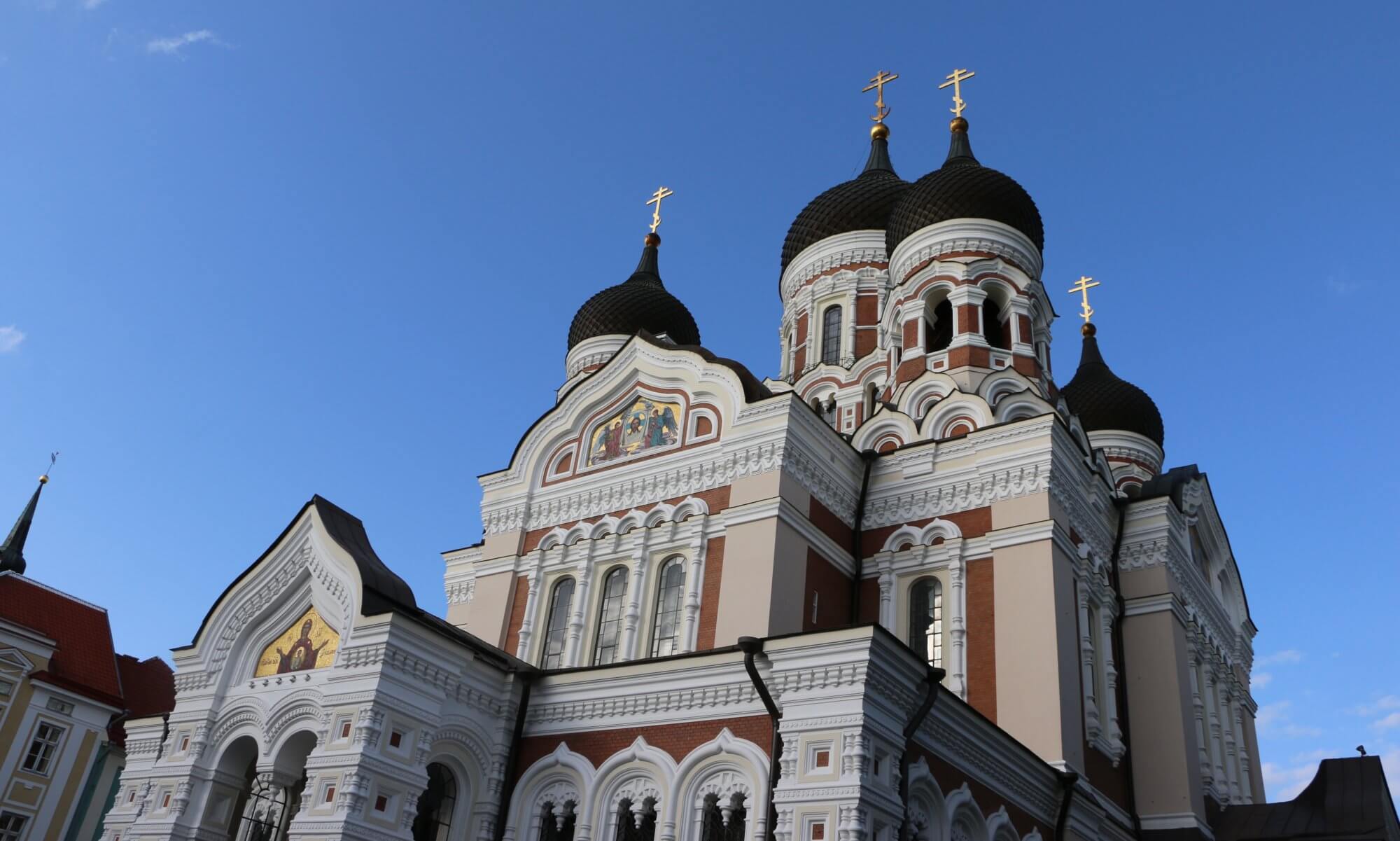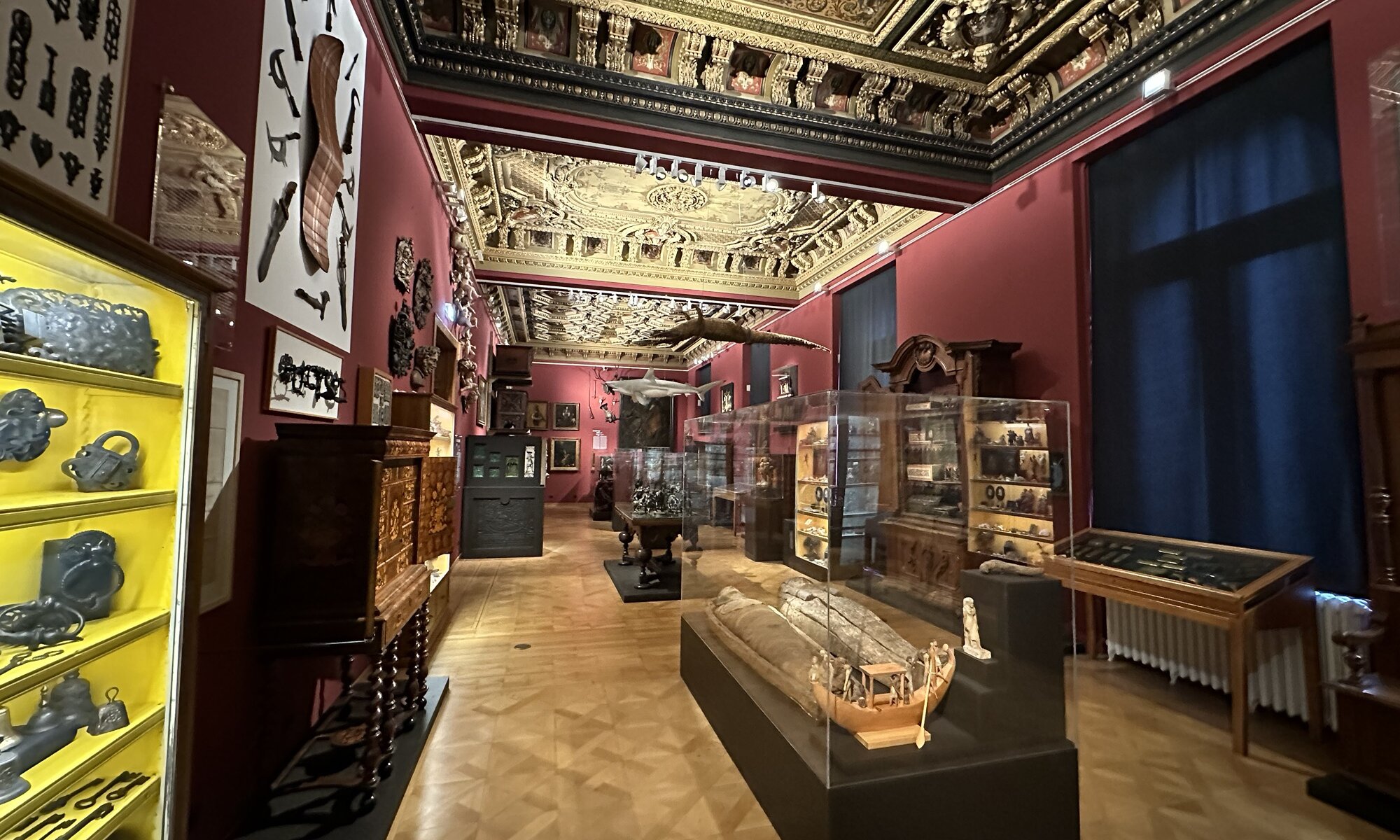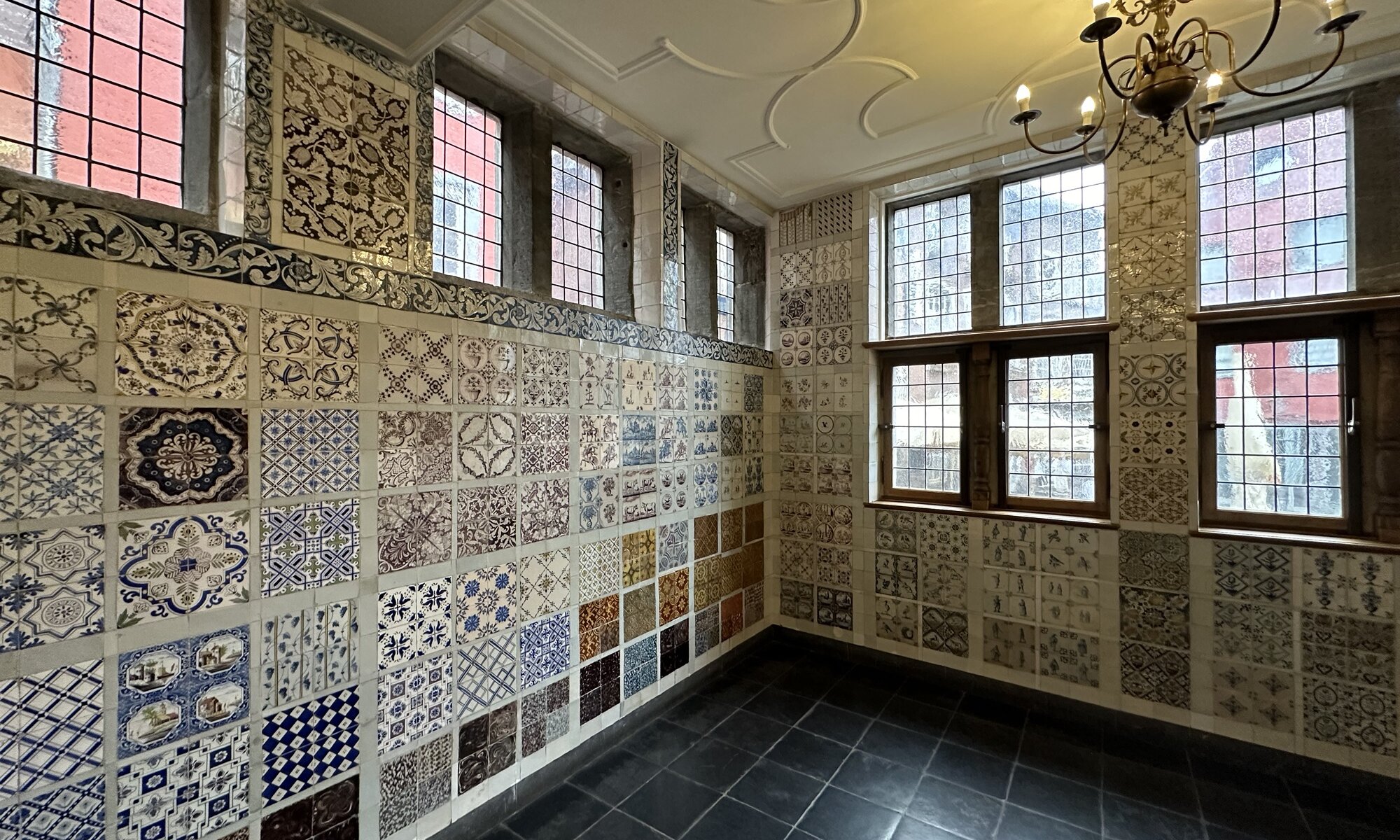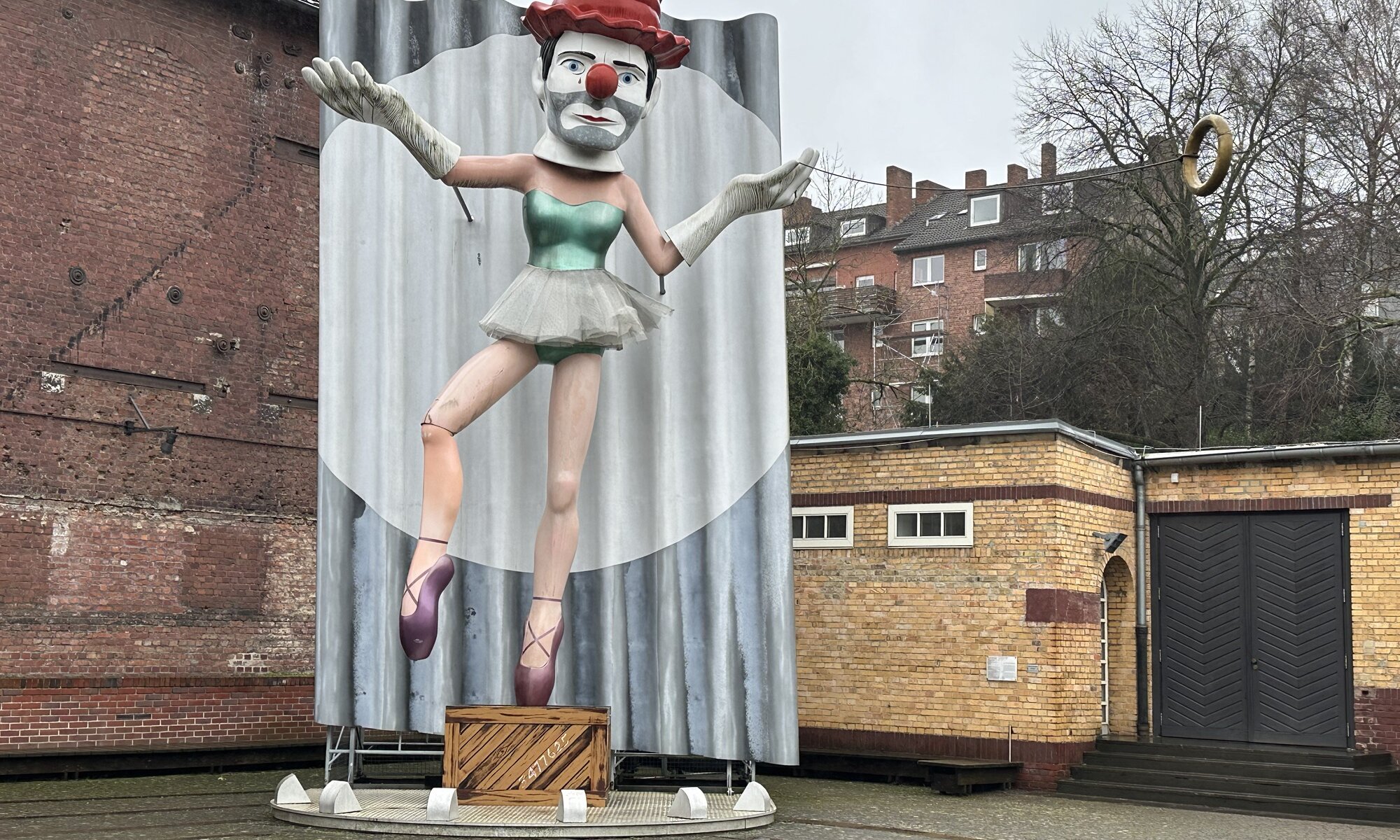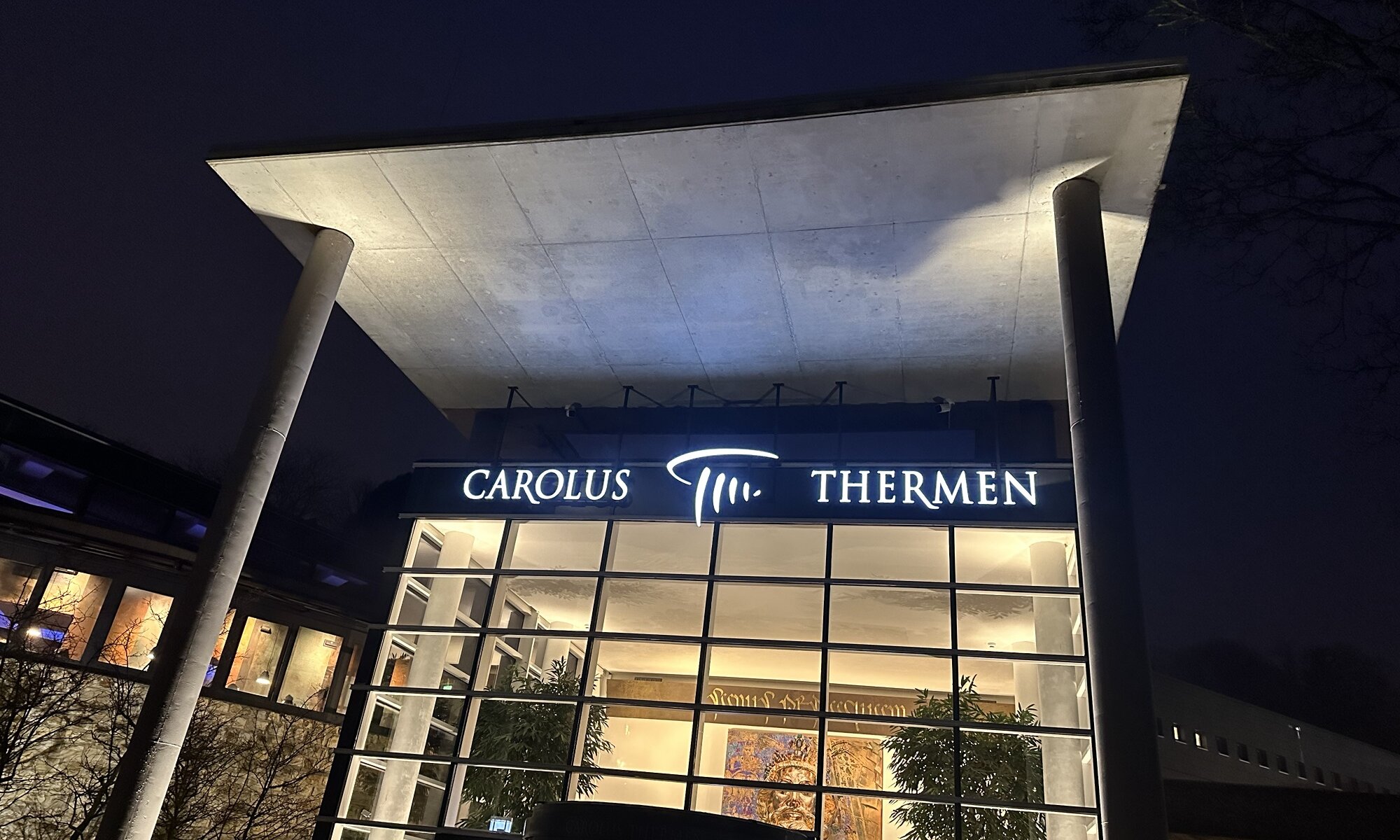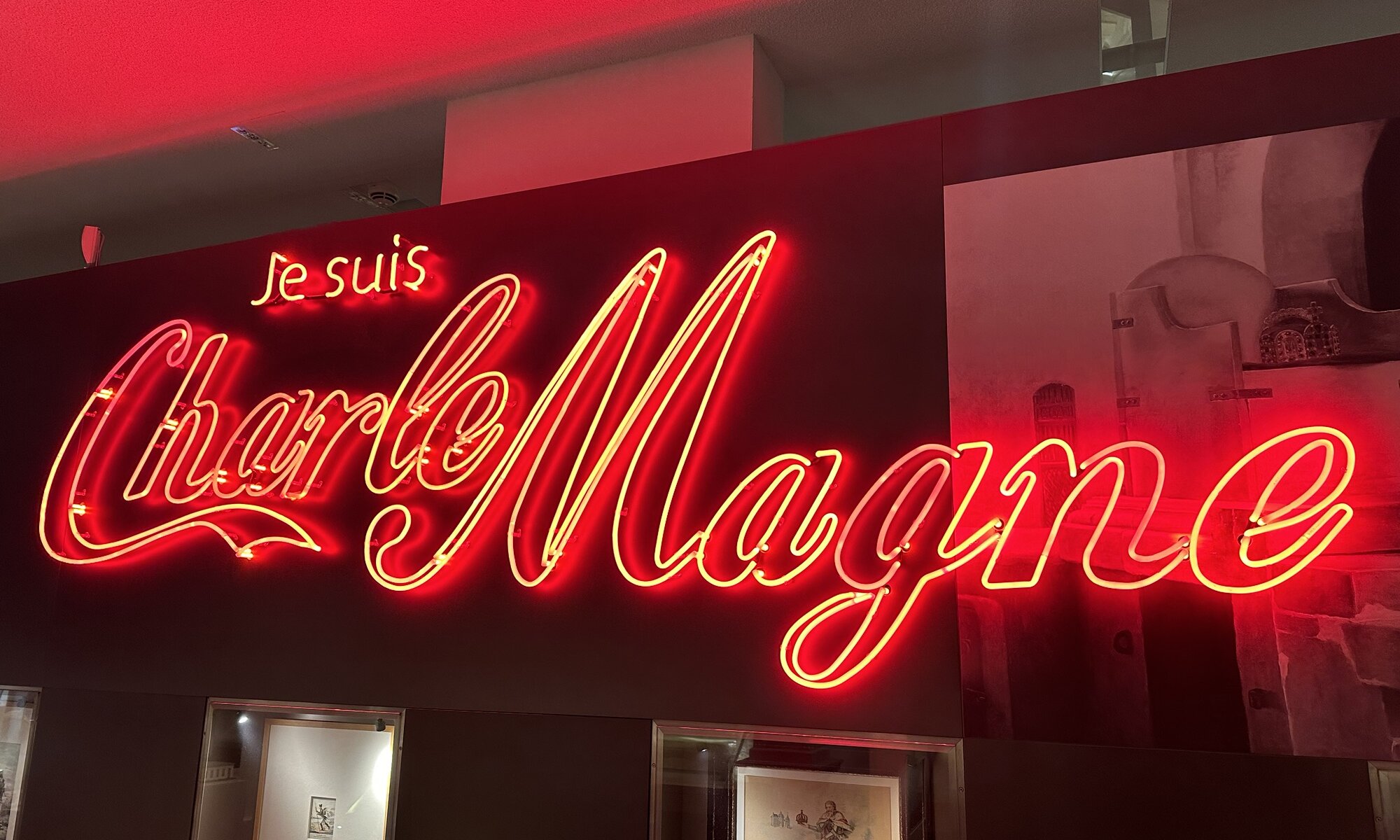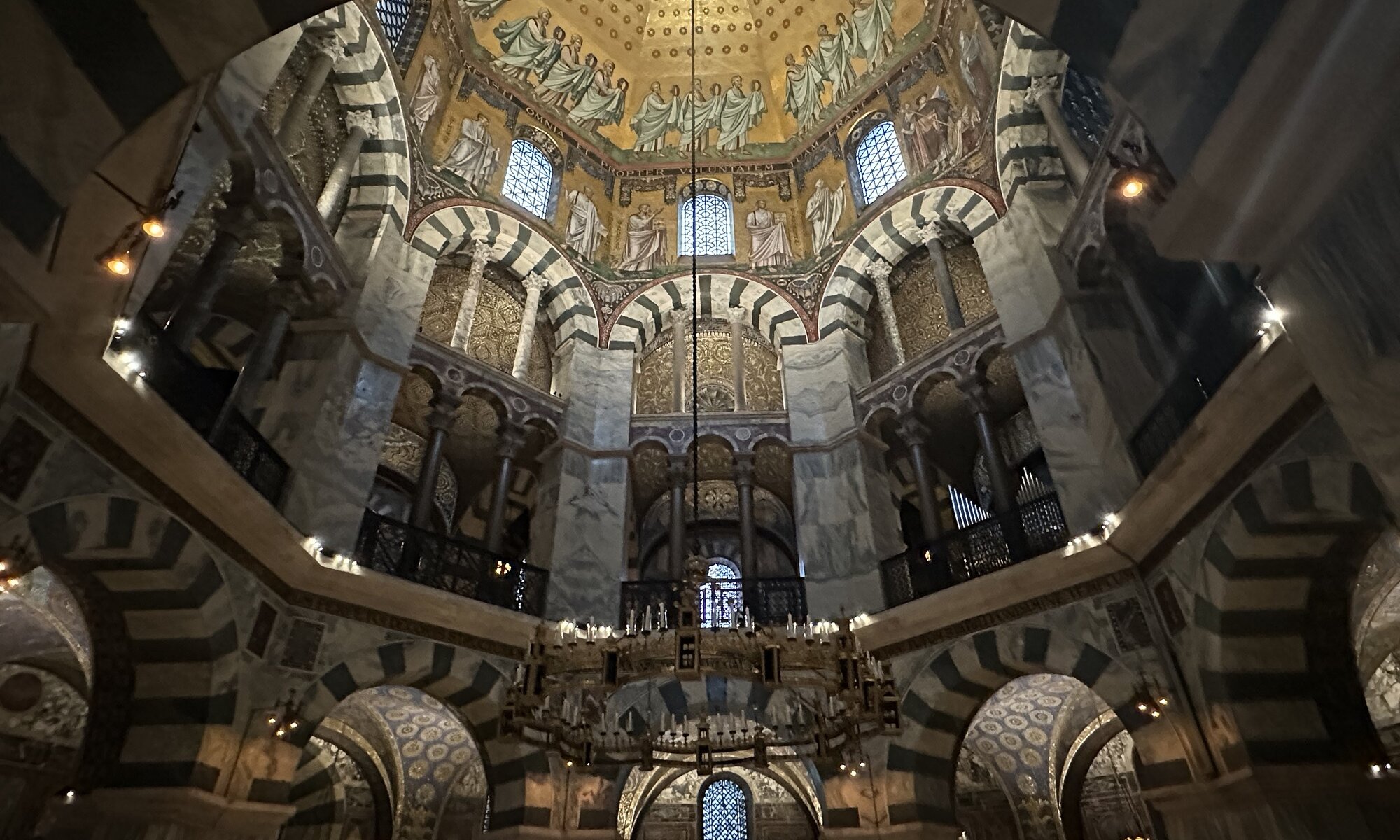The Suermondt-Ludwig-Museum (or short SLM) is the museum I liked most at Aachen and that is quite a surprise as large parts of the museum are filled with Christian art. It was founded in 1883 and is named after the entrepreneurs Barthold Suermondt and Irene & Peter Ludwig. First located in the Comphausbadstraße it can be found since 1901 at the Villa Cassalette at the street surrounding the city center and rather close to the main railway station. Within this wonderful building you can find paintings and sculptures from the 12th to the 18th century staged in a great way. A masterpiece are the many illuminated glass paintings.
Continue reading “SLM”Domschatzkammer
Due to the special role of Aachen in history the cathedral treasury is filled with many important items, gold and jewels. It is said to be the most important religious treasury north of the Alps and contains busts of Charlemagne, the golden reliquary that was used to store is hand after canonization, his coffin (the proserpina sarcophagus) and the ferula of Saint Peter. Even if you’re not a religious person it is worth to have a look into this well-secured treasure box.
Continue reading “Domschatzkammer”Couven
Johann Joseph Couven was an architect who created many churches, castles and villas in the area of Aachen. He was mainly working in Rococo and Baroque style and Couven was for example responsible for the redesign of the town hall building of Aachen including the market place in front and the Karlsbrunnen fountain. The Couven-Museum is located in building designed by his brother Jakob Couven: the Haus Monheim at the Hühnermarkt in the city center.
Continue reading “Couven”Umbrella factory
Since 1882 the Schirmfabrik Brauer was manufacturing umbrellas at Aachen. Between 1928 and 1984 the factory was located in the Jülicher Straße close to the city center. The factory building was created in New Objectivity style connected to Bauhaus, an amazing architecture including a saw-tooth roof typical for these times. And it is therefore no surprise that since 1987 the building is a protected heritage – but what to do with an historic factory that costs money to be preserved over time?
Continue reading “Umbrella factory”Rosenquelle
The reason to found the city of Aachen in exactly its current position and to create a Kaiserpfalz there is the existence of hot springs. Water is heated up in the underground and appearing in different places of the city center – the most obvious of one of these is the Kaiserquelle, today mostly named Elisenbrunnen. A hidden one is the Rosenquelle which is hidden today: its waters are 47 degrees Celsius hot at the surface and it is transported from the city centre to a spa, the Carolus-Thermen.
Continue reading “Rosenquelle”Centre Charlemagne
The history of Aachen is rich: from hot springs to the Romans, from the most important personality Charlemagne to the Karlspreis recipients, from the Treaty of Aix-la-Chapelle in 1748 to equestrian sports. For sure a city like this has its own city museum and in this case it is named Centre Charlemagne. It was opened in 2014 at the Katschhof between the cathedral and the town hall building.
Continue reading “Centre Charlemagne”Karlspreis
The town hall of Aachen is a Gothic style building created in the 14th century as a replacement for the Grashaus. It was built on parts of the former Kaiserpfalz and includes the Granusturm, a tower that was raised by 14 meters. Still today you can see the difference between the older and the newer parts of the tower. A requirement for the design of the town hall building was, that a special room had to be included: a hall for the coronation feast of the Holy Roman Emperors. The coronation happened at the cathedral close by, the feast was held at the town hall – and this hall is still there, used today for the awarding ceremony of the Internationaler Karlspreis zu Aachen.
Continue reading “Karlspreis”Aachener Dom
When in 1978 the UNESCO published the World Heritage Site list for the very first time there was only on entry from Germany: the Kaiserdom zu Aachen. It was created by the order of emperor Charlemagne from 795 on and it was part of his Kaiserpfalz at Aachen. Emperors by that time were continuously travelling and had different palaces in their territory. The most favorite palace of Charlemagne was at Aachen and you can still see that in the beauty of this cathedral.
Continue reading “Aachener Dom”